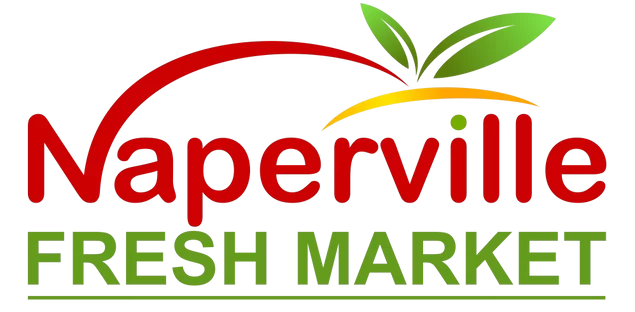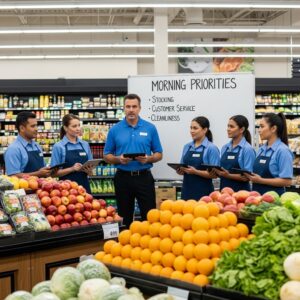Introduction: Your Guide to Organic Produce Sources Around Naperville
Finding reliable organic produce in Naperville, Illinois is easier when you understand the types of suppliers available and the strengths of each. From home-delivery services to local markets, farm shares, and independent grocers, this directory-style guide explains how to match your household’s needs with dependable options. As you explore, you can also preview a curated catalog of organic produce to spark ideas for weekly planning and to visualize how different suppliers might complement your cooking routine.
This guide focuses on supplier categories, evaluation criteria, and practical tips for ordering, shopping, and storing your produce. It avoids external links and emphasizes qualities you can verify directly with each provider, such as sourcing standards, rotation of seasonal items, and customer support.
Supplier Categories in and Around Naperville
There are several pathways to high-quality organic produce. Those who want maximum convenience and predictable variety may prefer delivery services, while market enthusiasts enjoy selecting each item by hand. Consider mixing and matching categories so you can experience seasonal diversity with minimal effort.
Home Delivery Services
Delivery services are ideal if you prefer the ease of curated boxes or flexible carts. Many offer swap options, add-ons like herbs or mushrooms, and tools to schedule deliveries around your calendar. In Naperville’s climate, early morning or late-evening delivery windows can help maintain temperature control, and insulated packaging further protects delicate greens and berries.
- Pros: Saves time, reliable access to staples, easy to plan meals.
- Consider: Cutoff times, delivery windows, packaging reuse policies.
- Tip: Leave porch instructions and a cooler on hot or freezing days.
Farm Shares and CSA-Style Options
Farm share models emphasize what is currently abundant, offering a broad sampling of seasonal produce across the growing season. Some shares allow limited swaps; others are fully farmer-selected. Expect more variety in peak months and a heavier focus on roots and brassicas in the shoulder seasons and winter.
- Pros: Peak freshness, seasonal diversity, opportunities to try new vegetables.
- Consider: Predictability varies, pickup coordination, and occasional bumper crops.
- Tip: Keep a list of flexible recipes—stir-fries, soups, and roasts—that adapt to surprises.
Farmers Markets
Farmers markets let you taste and see produce before you buy. Vendors often share cooking tips and storage advice. Arrive early for the best selection and bring a plan: leafy greens first, then fruits and sturdy items, with delicate berries and herbs last to avoid bruising. If you attend regularly, vendors may set aside favorite items when they know your preferences.
- Pros: Direct connection to growers, excellent flavor, educational conversations.
- Consider: Seasonality and weather affect availability; plan for cashless or cash payments as needed.
- Tip: Bring reusable bags and a cooler if you plan to stay for long.
Independent Grocers and Natural Markets
Independent grocers can offer robust organic selections, knowledgeable staff, and frequent rotation of seasonal items. Many curate local products alongside national organic brands. Because turnover is steady, freshness is often reliable, and you can consolidate errands by picking up pantry staples in the same trip.
- Pros: One-stop shopping, frequent restocks, year-round selection.
- Consider: Learn delivery days to time your visits for peak freshness.
- Tip: Keep a standing list of staples so you can replenish quickly.
Specialty Produce Shops and Co-ops
Specialty shops and co-ops emphasize organic standards and sourcing transparency. These stores may feature unique varieties, heirloom selections, and informative signage. Staff can point you to the best use-by windows for delicate greens or the sweetest batches of fruit that week.
- Pros: Deep knowledge, unique varieties, guidance on storage and cooking.
- Consider: Limited hours or smaller inventories; plan shopping days accordingly.
- Tip: Ask about case discounts for preserving projects and group buys.
Evaluation Checklist for Any Supplier
Assess each supplier with consistent questions so you can compare experiences and find your favorites. Keep notes in a simple spreadsheet or a notebook on your phone to track what you liked and what could improve.
- Quality control: How consistently fresh are leafy greens, herbs, and berries?
- Sourcing transparency: Do they share farm origins or regional sourcing details during peak seasons?
- Seasonal rotation: Do offerings shift month to month to reflect true seasonality?
- Handling and packaging: Are items protected from bruising and temperature swings?
- Customer support: Is it easy to report issues and receive timely assistance?
- Flexibility: Can you customize orders, pause deliveries, or request substitutions?
How to Combine Multiple Sources
Many households benefit from a hybrid plan. For example, use a delivery service for staples and a weekend farmers market for special items like heirloom tomatoes or unusual greens. Supplement with an independent grocer for pantry goods and last-minute produce. This approach blends convenience with discovery so you rarely feel stuck without ingredients for dinner.
Ordering and Pickup Logistics
When ordering for home delivery, note cutoff times and swap windows. For pickups, coordinate times that align with errands or kids’ activities. If you store a cooler in your car during warm months, you can combine multiple stops without compromising quality. Add reminders to your calendar so you keep produce moving from supplier to fridge with minimal delays.
Storage and Prep Across Supplier Types
Regardless of where you buy, early prep is the biggest driver of success. Wash and dry greens upon arrival, slice root vegetables for roasting, and set aside herb stems for sauces and stocks. If you purchase in bulk from a farm share or market, plan a preserving session—freezing blanched beans or roasting tomatoes—within 48 hours.
Signs of Well-Handled Produce
Look for crisp leaves without yellowing, berries that are dry and plump, cucumbers that feel firm from tip to stem, and tomatoes that smell fragrant. Ask sellers about harvest dates when possible. A supplier’s pride in handling often shows up in the small details: clean packing, minimal bruising, and thoughtful advice at the point of sale.
Budgeting Through Smart Use
Value is closely tied to how fully you use what you bring home. Plan a weekly soup or stir-fry that utilizes extras, and keep a jar for pickling brines to transform cucumbers, onions, or carrots. Use citrus zest to brighten roasted vegetables, and save leafy tops, like beet greens, for sautés and frittatas. These habits stretch every purchase, no matter where you shop.
Mid-Directory Inspiration
If you are still mapping your ideal mix of suppliers, spark ideas by skimming a cleanly organized lineup of fresh organic produce. Visualizing what you can cook in the coming week helps you decide which provider type will cover essentials and which will supply seasonal surprises.
Seasonal Expectations for the Naperville Area
In spring, plan on greens, radishes, asparagus, and herbs. Summer brings tomatoes, cucumbers, peppers, zucchini, and sweet corn. Fall showcases roots, brassicas, apples, and pears. Winter emphasizes hardy greens, potatoes, onions, and citrus. Many suppliers adjust their catalogs monthly to reflect this flow, so your shopping list should shift with it.
Serving Different Households
Singles and couples might prefer smaller weekly deliveries or biweekly shares supplemented by market visits. Families often choose a flexible delivery service plus one weekend shopping trip, ensuring lunchbox staples and dinner vegetables are always on hand. If you cook for special diets, select suppliers whose catalog descriptions clearly label types of produce and handling notes.
How to Ask the Right Questions
When you connect with a supplier, ask about harvest-to-shelf timelines, cold-chain practices, and packaging reuse. Clarify delivery days, pickup options, and notification systems. If transparency and communication are strong from the beginning, the rest of your experience tends to follow suit.
Frequently Asked Questions
Q: How do I decide between a delivery service and a farm share? A: If you value convenience and customization, choose delivery. If you enjoy surprises and cooking by the season, try a farm share. Many households blend both.
Q: What if I cannot pick up a share on my scheduled day? A: Ask about alternate pickup windows or holding policies. Some programs let you skip a week with advance notice.
Q: How do I handle occasional quality issues? A: Report them promptly with clear descriptions and photos. Most suppliers offer credits or replacements and appreciate the feedback.
Q: Are farmers markets worth the extra time? A: Yes if you enjoy tasting, talking to growers, and discovering unique varieties. Markets can complement delivery services by supplying special items.
Q: How can I store produce to make it last longer? A: Keep greens washed and dried in breathable containers, store roots in the crisper, and place onions and garlic in a well-ventilated, dark area.
Begin Your Organic Produce Journey
Naperville offers multiple avenues to bring vibrant, organic ingredients into your kitchen. Start by selecting one primary supplier type and add a secondary source for variety. Keep a short list of recipes that fit seasonal availability, and set a weekly prep routine that protects freshness. For menu inspiration and to clarify what your household will enjoy most, preview an organized range of organic produce selection and build a plan that suits your schedule. With consistent habits and a willingness to experiment, you will create a reliable, delicious pipeline of organic produce year-round.




